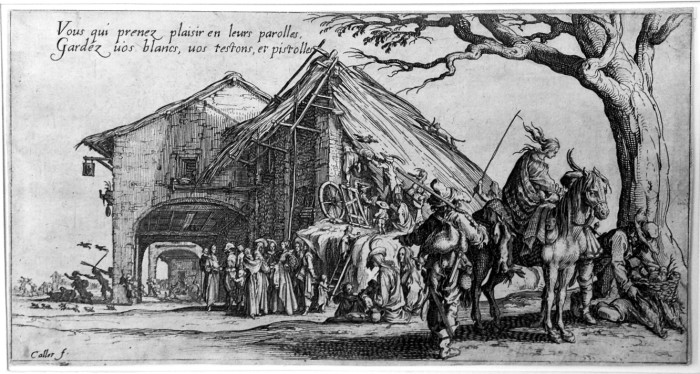The Bohemians
The Bohemians
Jacques Callot (1592-1635), The Bohemians, the set of four etchings touched with burin, 1621. Reference: Lieure 374 (second state of four); Lieure 375-77 (second state of two). In very good condition, trimmed on or slightly within the platemark but outside of the borderline, 124 x 238 mm.
A fine uniform early set of these iconic images. The first plate (L. 374) is known in four states, the latter two posthumous (our impression is the second state of four, before the posthumous printings). The first state for each plate is extremely rare (Lieure RRRR).
L. 377 with a Cross of Lorraine watermark
The Bohemians is the only case of a Callot series to be assembled in a continuous strip, i.e., the tree in the Stopping Place is completed in the Feast, etc.; so the set could be seen as a long horizontal strip.
The origins of the set are not clear. Lieure believed that it stemmed from Callots early experience -that at the age of 12 he had wanted to travel to Italy, and joined a band of wandering bohemians who brought him to Florence where he was placed in a workshop, then discovered by some merchants from Nancy who made him return home. But this may have been a legend; others have felt that this is a band of mercenary troops rather than gypsies, but its questionable that troops would have brought their families along on their travels. The bohemians do appear to be pillagers, as indicated by the language in The Stopping Place suggesting that those seduced by the bohemians should guard their gold pieces.



